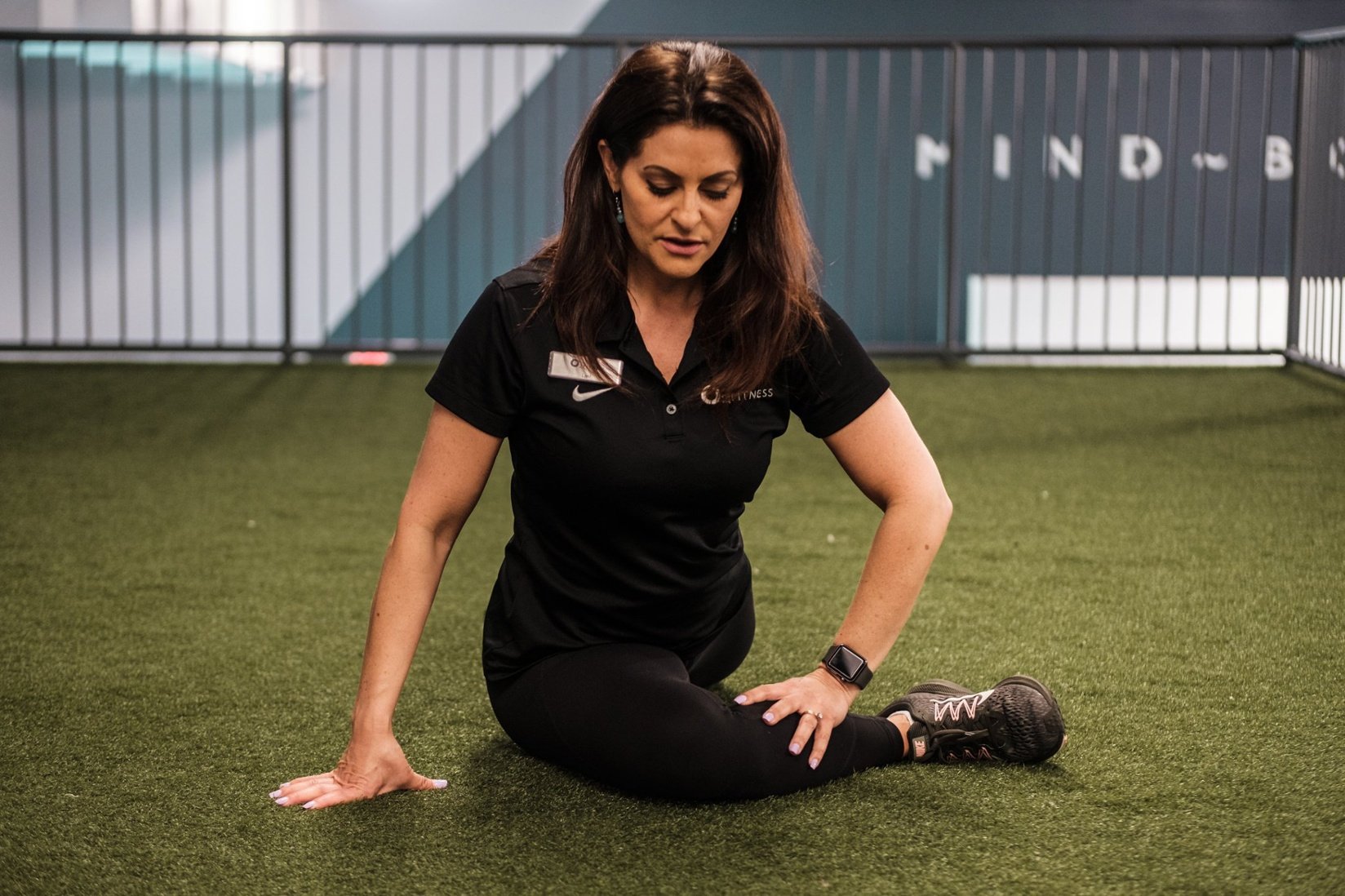How to Start a Fitness Bootcamp Business in 2025
Learn how to start a fitness bootcamp business with our step-by-step guide to starting and running a fitness bootcamp business.

Get a free fitness bootcamp checklist, an example fitness bootcamp workout plan, an example fitness bootcamp class schedule, an example fitness bootcamp profit and loss statement, and more. From setting up the best fitness bootcamp business model and marketing strategy to actually learning how to run a fitness bootcamp class successfully, this guide will give you everything you need to grow a fitness bootcamp business that helps your attendees reach their fitness goals and you reach your financial goals.
Running a fitness bootcamp can be a challenging yet rewarding experience for fitness enthusiasts looking to share their passion with others and learn how to start a fitness business. A fitness bootcamp offers a unique and intense workout experience that combines various exercises and training techniques to help participants reach their fitness goals. It can also be one of the most profitable fitness business models, especially when paired with a premium service offering and a high price point, as with high ticket fitness coaching.

In this guide, we will explore the different aspects of running a fitness bootcamp, including the benefits, essential equipment, choosing the right location, planning and organizing, workout scheduling, designing HIIT workouts, incorporating strength training, warm-up and cool-down routines, motivating and inspiring participants, modifying exercises for different fitness levels, team-building activities, marketing and advertising strategies, pricing and revenue models, managing client expectations, safety tips and guidelines, evaluating progress, and building a community.
Learn how to successfully run a fitness bootcamp with our comprehensive guide, and then be sure to check out our big list of fitness bootcamp ideas, the free fitness bootcamp business plan template, and then choose the best fitness bootcamp software.
And did you know that you can run your entire fitness bootcamp business on the Exercise.com platform?
Here’s just some of what you can do:
Manage bootcamp members with ease.
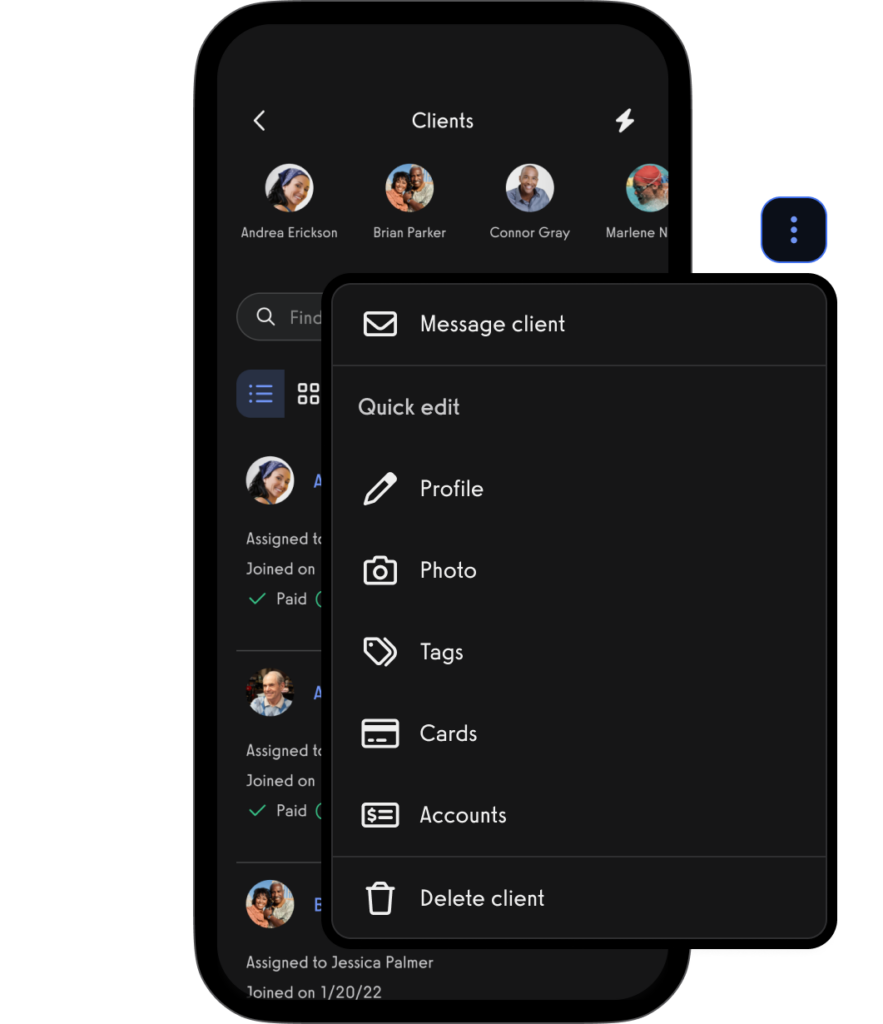
Book classes with ease. (Read More: Best Gym Booking Software)
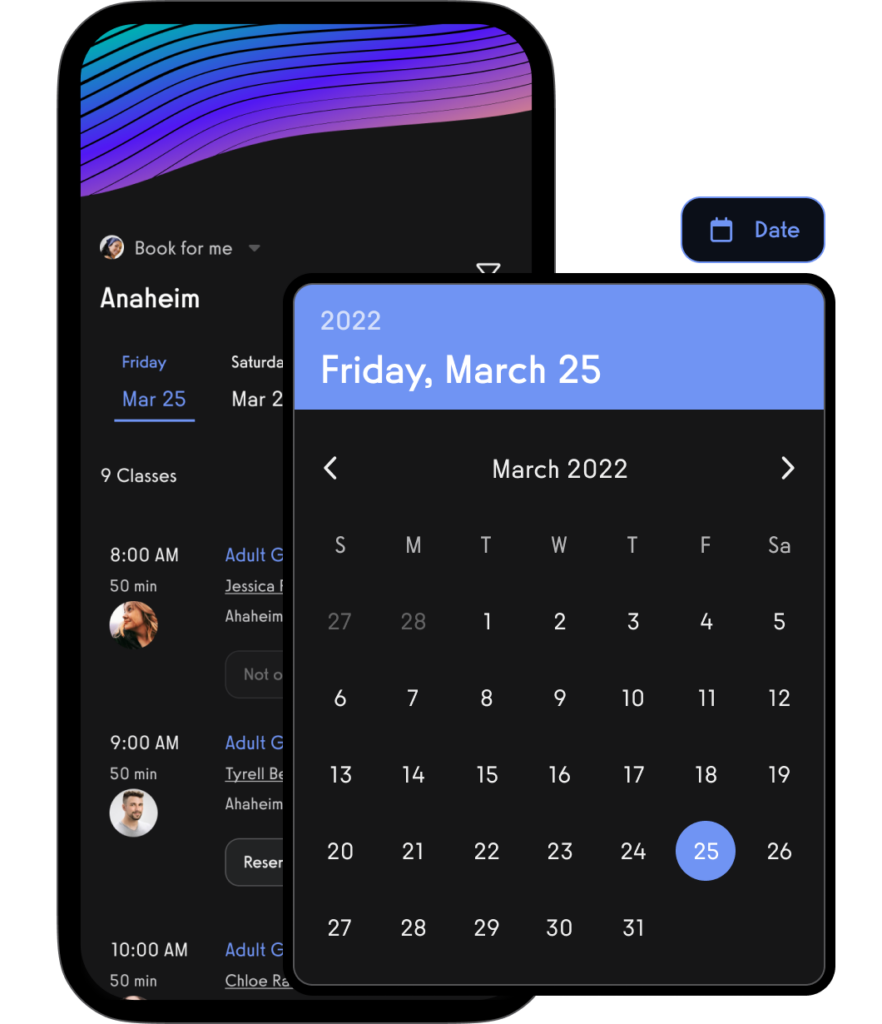
Engage with members via automations.
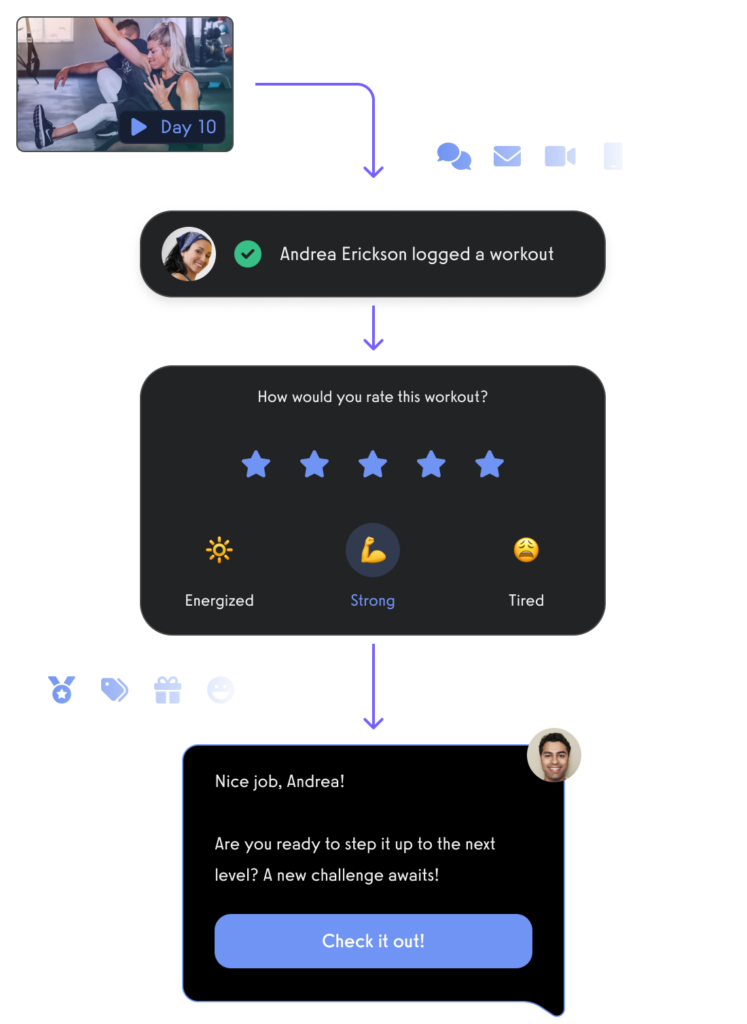
Create classes and fitness groups.
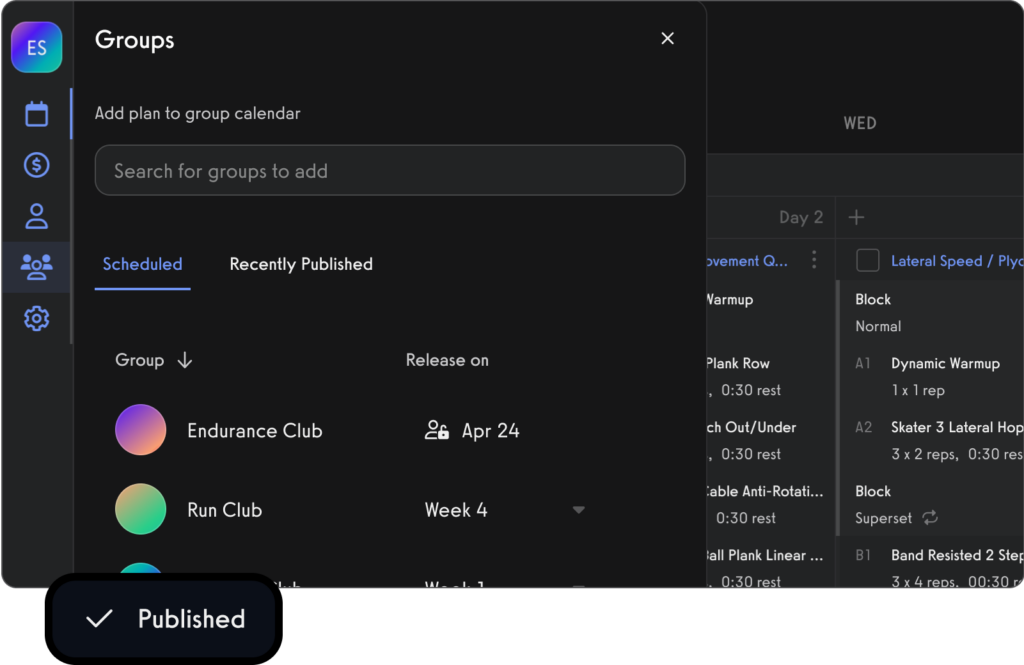
Manage fitness challenges.

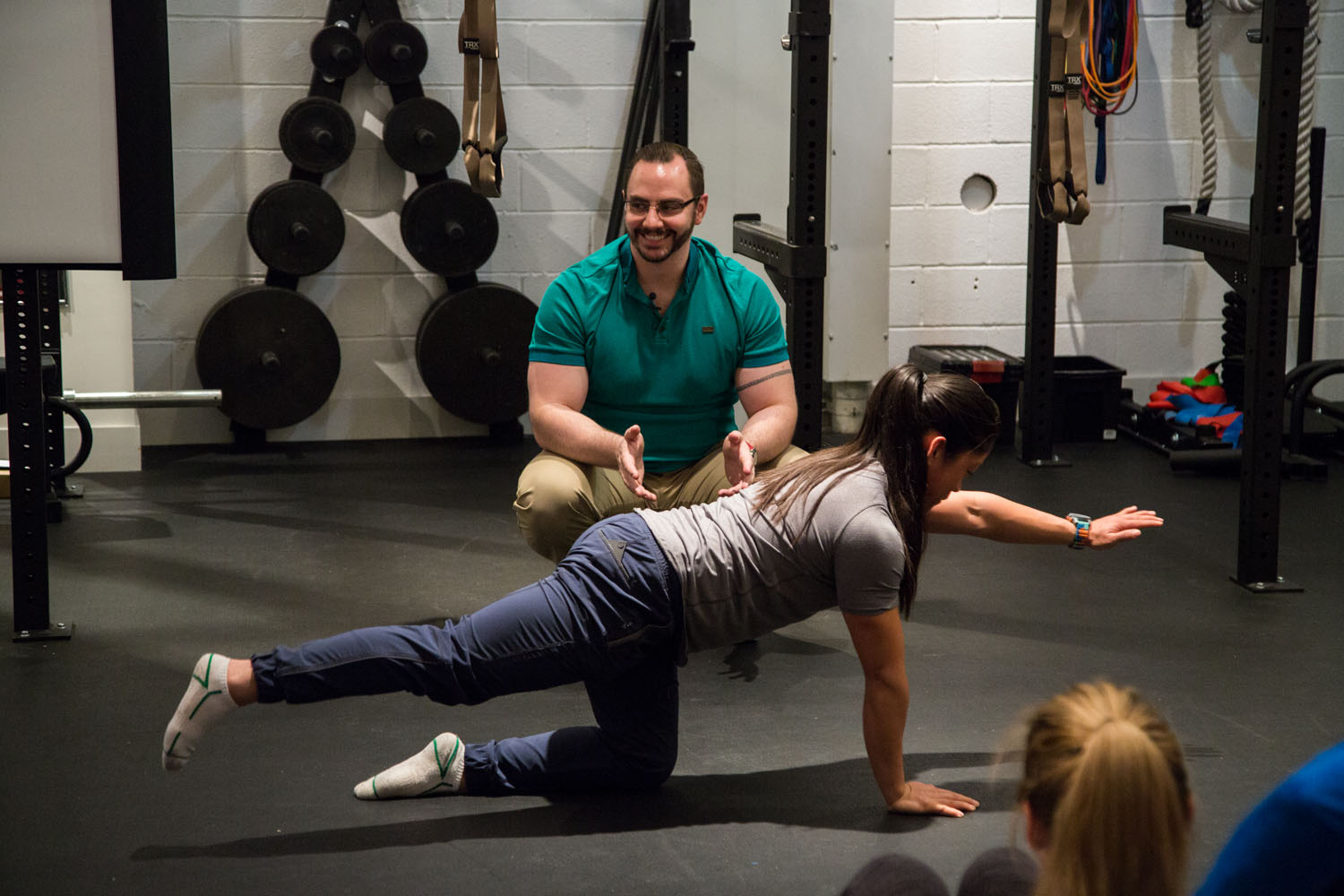
And here at Exercise.com, we understand the importance of having a world-class software platform to power your fitness bootcamp growth. That’s why we offer the best gym management software and the best personal training software solutions to help you streamline your operations and supercharge your marketing efforts. See how this can make running a fitness bootcamp business something that is as exciting to run as it is to attend.
Fitness Bootcamp Checklist
Here is a step by step guide to starting a fitness bootcamp:
1. Define Your Bootcamp
Determine the type of fitness bootcamp you plan on hosting (HIIT, weight training, circuit training, etc.) and the target demographic.
Read More:
2. Create a Business Plan
Outline the operations, marketing strategy, and financial projections of your fitness bootcamp.
3. Use Exercise.com Platform
Incorporate the use of Exercise.com software to manage bookings, payments, marketing, client tracking, and more.
4. Find a Location
Secure a location that suits the nature of your bootcamp—indoors, outdoors, rented gym space, etc.
5. Obtain Necessary Permits
If you’re using a public space, ensure you have the necessary permits and permissions.
6. Purchase Equipment
Buy the required fitness equipment based on the bootcamp type.
7. Insurance
Obtain liability insurance to protect your business against any potential lawsuits.
8. Hire Certified Trainers
Ensure trainers are certified and experienced in running bootcamps.
9. Create a Workout Program
Develop a comprehensive workout program for the duration of the bootcamp.
10. Marketing
Utilize social media, local advertising, and word of mouth to promote your bootcamp.
11. Registration
Use the Exercise.com platform to manage client registrations and waivers.
12. First Aid Kit
Always have a first aid kit on hand for emergencies.
Read More:
- How to Create a Gym Business Plan
- How to Get the Best Gym Insurance
- How to Get the Best Personal Trainer Insurance
Example Fitness Bootcamp Workout
- Warm-up (10 minutes): Jumping jacks, dynamic stretching, and light cardio.
- Circuit Training (30 minutes): Three circuits, each consisting of five exercises performed for 45 seconds each with a 15-second rest between exercises. Repeat each circuit twice.
- Circuit 1: Push-ups, squats, jumping lunges, burpees, mountain climbers.
- Circuit 2: Plank, side lunges, tricep dips, high knees, sit-ups.
- Circuit 3: Box jumps, kettlebell swings, bicycle crunches, tuck jumps, lunges.
- Cool Down (10 minutes): Static stretching and deep breathing exercises.
Read More: Fitness Bootcamp Ideas
Example Fitness Bootcamp Class Schedule
- Monday, Wednesday, Friday:
- Morning Bootcamp: 6:00 – 7:00 AM
- Mid-Morning Bootcamp: 10:00 – 11:00 AM
- Evening Bootcamp: 6:00 – 7:00 PM
- Tuesday, Thursday:
- Lunch Hour Bootcamp: 12:00 – 1:00 PM
- After-Work Bootcamp: 5:30 – 6:30 PM
- Saturday:
- Weekend Warrior Bootcamp: 9:00 – 10:00 AM
Example Fitness Bootcamp Business Profit and Loss Statement
| Item | Amount |
|---|---|
| Revenue | |
| Monthly Membership Revenue (50 members at $150/month) | $7,500 |
| Drop-In Fees (10 drop-ins at $20/session) | $200 |
| Total Revenue | $7,700 |
| Expenses | |
| Trainer Wages (2 trainers at $25/hour, 20 hours/week) | -$2,000 |
| Equipment Maintenance | -$100 |
| Rent (If applicable) | -$500 |
| Insurance | -$200 |
| Marketing | -$200 |
| Misc. Expenses (water, towels, cleaning, etc.) | -$100 |
| Total Expenses | -$3,100 |
| Net Profit | $4,600 |
Please note: These numbers are purely illustrative. Your revenues and costs may vary depending on factors such as location, pricing, and the specific costs associated with running your fitness bootcamp.
Read More: How to Start a Fitness Business

Also, remember that the Exercise.com software platform is an excellent tool to handle many of the administrative tasks associated with running a fitness bootcamp, such as scheduling, client management, payment processing, marketing, and more. This can save you time and reduce administrative costs, thus improving your net profit.
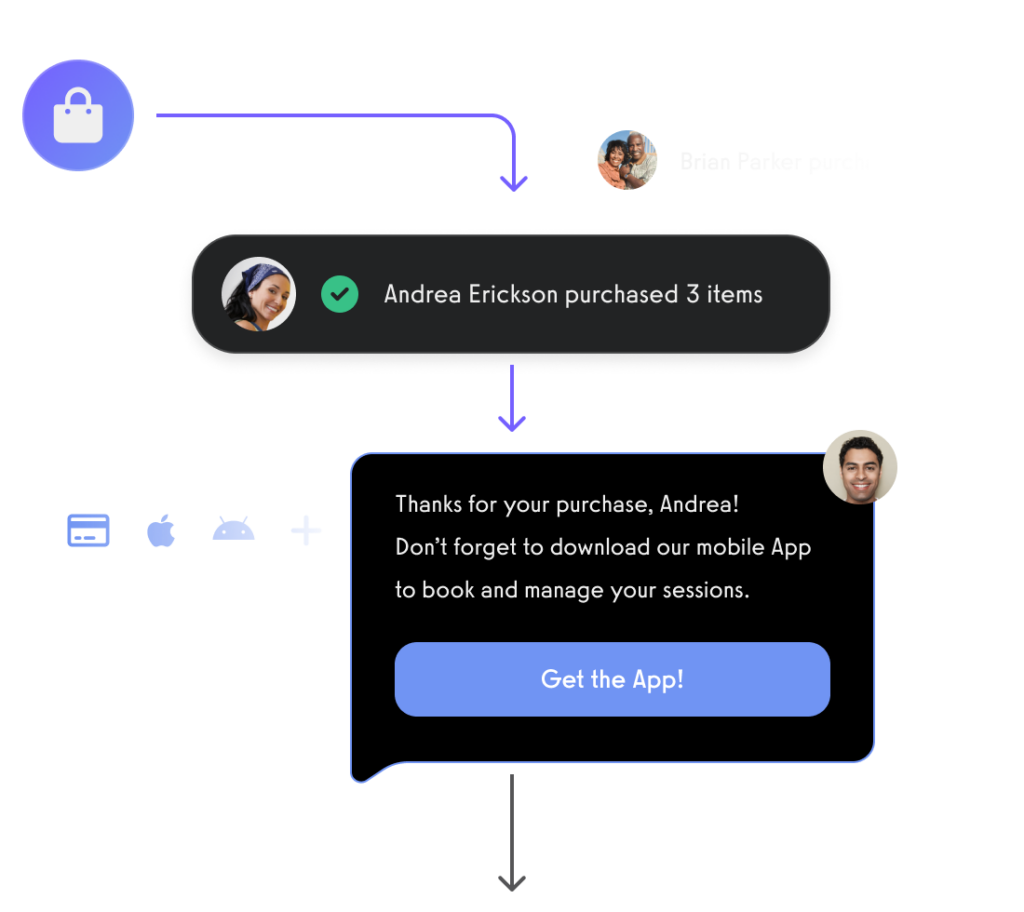
Want to get started running a profitable fitness bootcamp using the best software for fitness business owners? You can even start a fitness business from home! Here’s what you need to get started:

Read More:
- Most Profitable Business Models
- How to Increase Gym Revenue and Profitability
- How profitable is online fitness coaching?
The Benefits of Running a Fitness Bootcamp
When it comes to fitness bootcamps, the benefits are abundant. First and foremost, bootcamps provide participants with an effective and efficient workout that targets multiple muscle groups and improves cardiovascular fitness. The high-intensity nature of bootcamp workouts helps burn calories and increase metabolism, making it an ideal choice for those looking to lose weight or tone their bodies. Bootcamps also offer a supportive and motivational environment, where participants can push their limits and achieve results they never thought possible. Moreover, bootcamps foster a sense of community and camaraderie among participants, creating a positive and inspiring atmosphere for everyone involved.
Essential Equipment for a Fitness Bootcamp
When setting up a fitness bootcamp, it is important to have the right equipment to ensure a safe and effective workout environment. Some essential equipment includes resistance bands, dumbbells, kettlebells, medicine balls, jump ropes, agility cones, and exercise mats. These tools help add variety and intensity to the workouts, allowing participants to challenge themselves and progress over time. Additionally, having adequate equipment ensures that participants can engage in a wide range of exercises that target different muscle groups, providing a comprehensive full-body workout experience. It is crucial to invest in high-quality equipment that is durable and can withstand the demands of a bootcamp setting.
Choosing the Right Location for Your Fitness Bootcamp
The location of your fitness bootcamp plays a crucial role in its success. When selecting a location, consider factors such as accessibility, space, and amenities. Ideally, choose a location that is easily accessible to your target audience, whether it is a park, a beach, a community center, or a dedicated fitness facility. The chosen space should have enough room to accommodate your participants and allow for various exercises to be performed comfortably. Consider whether the location has access to restroom facilities, water fountains, and parking areas. Additionally, take into account the natural surroundings of the location, as being in a beautiful and serene environment can enhance the overall bootcamp experience for participants.
Planning and Organizing a Successful Fitness Bootcamp
A well-planned and organized fitness bootcamp is essential to ensure a smooth and enjoyable experience for all participants. Start by creating a detailed schedule that outlines the days, times, and duration of each bootcamp session. Consider offering flexible options such as morning, evening, and weekend classes to accommodate different schedules. Next, determine the maximum number of participants you can handle to maintain a high level of quality and attention during the workouts. It is crucial to set clear goals and objectives for each bootcamp session and plan themed workouts or challenges to keep participants engaged and motivated. Moreover, establish a system for registration and payment to streamline the administrative process and track participant attendance.
Creating an Effective Workout Schedule for Your Bootcamp
A well-designed workout schedule is key to providing variety and progression in your fitness bootcamp. Create a balanced program that includes cardiovascular exercises, strength training, and flexibility training. Aim to have a diverse range of exercises and workouts to keep participants engaged and prevent boredom. Consider incorporating elements of high-intensity interval training (HIIT), circuit training, and functional training to maximize results and challenge participants. It is important to plan for adequate warm-up and cool-down periods to prevent injuries and ensure proper recovery. Additionally, rotate the focus of each session to target different muscle groups and provide a well-rounded fitness experience.
Designing High-Intensity Interval Training (HIIT) Workouts for Your Bootcamp
High-intensity interval training (HIIT) is a popular and effective training technique that can be incorporated into your fitness bootcamp. HIIT workouts involve alternating between short bursts of intense exercise and brief periods of rest or active recovery. These workouts are known to boost metabolism, burn calories, and improve cardiovascular fitness. When designing HIIT workouts for your bootcamp, consider selecting exercises that engage multiple muscle groups and challenge participants both mentally and physically. Incorporate a mix of cardio exercises, such as sprints, burpees, and jump squats, with strength-training exercises, such as push-ups, lunges, and kettlebell swings. Remember to provide modifications for different fitness levels to ensure inclusivity and safety.
Incorporating Strength Training into Your Fitness Bootcamp
Strength training is a vital component of any fitness bootcamp, as it helps build lean muscle mass, increase strength, and improve overall body composition. When incorporating strength training into your bootcamp, focus on compound exercises that target multiple muscle groups simultaneously. Include exercises such as squats, deadlifts, lunges, push-ups, pull-ups, and overhead presses. Choose a variety of equipment, such as dumbbells, kettlebells, resistance bands, and bodyweight exercises, to provide options and challenges for participants of different fitness levels. It is important to teach proper form and technique to prevent injuries and ensure maximum benefits.
The Importance of Proper Warm-Up and Cool-Down in a Bootcamp Setting
Proper warm-up and cool-down routines are essential in a fitness bootcamp to prepare the body for exercise and aid in recovery. Warm-ups should include dynamic stretches and movements that increase heart rate, improve flexibility, and activate the muscles to be used during the workout. Examples of warm-up exercises include jogging in place, arm circles, leg swings, and trunk rotations. Cool-downs should focus on static stretching and deep breathing to gradually lower heart rate, release tension in the muscles, and promote recovery. Encourage participants to stretch all major muscle groups and hold each stretch for 15-30 seconds. Emphasize the importance of hydration and encourage participants to hydrate before, during, and after the bootcamp session.
Tips for Motivating and Inspiring Participants in Your Fitness Bootcamp
Motivation and inspiration are key factors in the success of your fitness bootcamp. To keep participants motivated, create a positive and supportive environment where individuals feel encouraged to push their limits and celebrate their achievements. Recognize and acknowledge participant progress and milestones. Incorporate challenges, competitions, or rewards to add an element of fun and excitement. Vary the workouts and exercises to prevent monotony and customize the experience to individual goals and preferences. Consider inviting guest instructors or trainers to provide fresh perspectives and new workout ideas. Lastly, lead by example and be enthusiastic, energetic, and passionate about fitness to inspire and motivate your participants.
How to Modify Exercises for Different Fitness Levels in Your Bootcamp
In a fitness bootcamp setting, it is essential to provide modifications and alternatives for exercises to accommodate participants with different fitness levels and abilities. When demonstrating exercises, explain and demonstrate variations that allow participants to adjust the intensity or difficulty based on their fitness level. For example, offer modified versions of push-ups, squats, and planks for beginners or individuals with physical limitations. Encourage participants to listen to their bodies and work within their comfort zones while still challenging themselves. Provide guidance and personal attention to ensure each participant feels supported and included.
Incorporating Team-Building Activities in Your Fitness Bootcamp
Team-building activities add a unique and valuable element to any fitness bootcamp, fostering camaraderie and building a sense of community among participants. Incorporate partner or group exercises that require cooperation, communication, and teamwork. Examples include partner carries, team relays, and group challenges. Additionally, organize community events or charity fundraisers that allow participants to come together for a common cause outside of regular bootcamp sessions. These activities not only enhance the overall bootcamp experience but also create lasting connections and friendships among participants.
Promoting Your Fitness Bootcamp: Marketing and Advertising Strategies
Successful marketing and advertising are crucial for attracting participants to your fitness bootcamp. Start by creating a professional and visually appealing website or landing page that highlights the unique features and benefits of your bootcamp. Utilize social media platforms, such as Instagram and Facebook, to showcase before and after photos, client testimonials, and workout videos. Collaborate with local fitness influencers or wellness bloggers to promote your bootcamp through sponsored posts or collaborations. Offer referral incentives for current participants to bring in friends or family members. Lastly, consider hosting free or discounted trial classes to allow potential participants to experience the bootcamp firsthand.
Read More: Personal Training Marketing Guide
Pricing and Revenue Models for a Successful Fitness Bootcamp Business
When it comes to pricing and revenue models for your fitness bootcamp business, several factors need to be considered. Determine your target audience and research the market to understand the going rates for bootcamp services in your area. Offer flexible pricing options such as drop-in rates, monthly packages, or class bundles to cater to different financial situations. Consider offering special promotions or discounts during certain times of the year to attract new participants or retain existing ones. Collaborate with local businesses, such as gyms or wellness centers, to offer joint packages or partnerships. Additionally, explore additional revenue streams such as merchandise sales, online programs, or corporate wellness programs.
Managing Client Expectations and Providing Excellent Customer Service at Your Bootcamp
Managing client expectations and providing excellent customer service are crucial aspects of running a successful fitness bootcamp. Clearly communicate the goals, expectations, and limitations of your bootcamp to potential participants to ensure alignment. Be transparent about the level of intensity, the types of exercises, and the commitment required. Provide ongoing support and guidance to participants by offering nutritional advice, goal-setting sessions, and progress tracking. Address any concerns or questions promptly and professionally. Regularly gather feedback through surveys or participant meetings to continuously improve and enhance the bootcamp experience based on client preferences.
Safety Tips and Guidelines for Running a Fitness Bootcamp
Ensuring the safety and well-being of participants should be a top priority when running a fitness bootcamp. Start by conducting thorough warm-up and cool-down routines to prepare participants’ bodies for exercise and prevent injuries. Instruct participants on proper exercise form and technique to prevent accidents and reduce the risk of strains or sprains. Encourage participants to listen to their bodies and modify exercises as needed. Have emergency protocols in place, including access to first aid kits and emergency contact information. Stay informed about current safety guidelines and recommendations from reputable fitness organizations or associations.
Evaluating and Tracking Progress: Monitoring Results in Your Fitness Bootcamp
Evaluating and tracking participant progress is essential for both their motivation and the success of your fitness bootcamp. Implement a system for tracking individual fitness assessments, including measurements, body composition analysis, and fitness tests. Set realistic goals and benchmarks for participants to strive towards. Regularly conduct progress updates or check-ins to review and discuss individual progress. Celebrate achievements and milestones, both big and small, to keep participants motivated and engaged. By offering personalized feedback and guidance, you can help participants stay accountable and continuously improve.
Building a Community: Fostering Relationships with Participants in Your Bootcamp
A strong sense of community is one of the most rewarding aspects of a fitness bootcamp. Foster relationships with participants by creating opportunities for socializing, networking, and connecting outside of the bootcamp sessions. Organize social events or gatherings that allow participants to come together and bond over shared interests and goals. Encourage participants to join online groups or forums where they can ask questions, share experiences, and support one another. Showcase success stories and testimonials from participants to demonstrate the positive impact of your bootcamp. Ultimately, building a community within your bootcamp creates a supportive and inclusive environment that keeps participants coming back for more.
Read More: Gym Partnership Marketing Guide
Read More:
- How to Start a Fitness Business
- How to Name a Fitness Business
- Fitness Business Ideas
- How to Make a Fitness App
- Fitness App Name Ideas
Get Started Running a Fitness Bootcamp!
Running a fitness bootcamp requires careful planning, organization, and attention to various aspects. From selecting the right location to designing effective workouts, providing modifications for different fitness levels, and fostering a sense of community, every detail contributes to the success of your bootcamp. By incorporating these strategies and tips, you can create an engaging and transformative fitness bootcamp experience for participants, helping them achieve their fitness goals while building long-lasting relationships and a thriving community.

How do you structure a fitness bootcamp?
Structuring a fitness bootcamp involves designing a workout program that incorporates a variety of exercises to target different muscle groups and energy systems. Typically, a bootcamp might include a warm-up, a circuit-style workout with high-intensity intervals, and a cool-down. Exercise.com’s workout plan creator can be invaluable in this process, allowing you to design and save custom workouts, easily adjust workouts for different fitness levels, and provide clear instructions and demonstrations for each exercise.
How long should a fitness bootcamp last?
A fitness bootcamp typically lasts between 45 to 60 minutes. This time frame allows for a comprehensive workout including a warm-up, high-intensity circuit training, and a cool-down. It’s also a practical duration for most participants and fits well into typical scheduling blocks. However, the length can be adjusted based on your specific goals, participants’ fitness levels, and the structure of the workout.
How do fitness bootcamps work?
Fitness bootcamps work by providing high-intensity, varied workouts in a group setting. Participants perform a series of exercises, often in a circuit format, with minimal rest between exercises. The intensity and variety not only improve fitness but also keep participants engaged and motivated. Platforms like Exercise.com can enhance the effectiveness of bootcamps by providing tools for workout design, participant management, progress tracking, and communication.
How do you lead a fitness bootcamp class?
Leading a fitness bootcamp class involves demonstrating exercises, motivating participants, and ensuring everyone is exercising safely and effectively. It’s important to provide clear instructions, maintain a high energy level, and offer modifications for different fitness levels. Exercise.com can support you in leading a bootcamp class by providing a platform to display workout instructions and demonstrations, track participant progress, and manage bookings and payments.
What makes a good fitness bootcamp instructor?
A good fitness bootcamp instructor is knowledgeable about fitness, effective at communication, motivational, and attentive to participants’ needs. They should be able to design varied and challenging workouts, instruct participants on proper form, keep energy levels high, and foster a positive and inclusive atmosphere. Exercise.com can assist instructors by providing comprehensive tools for workout design, client management, and progress tracking.
What are the components of a fitness bootcamp?
The main components of a fitness bootcamp include a warm-up, a high-intensity interval training (HIIT) session, and a cool-down. The HIIT session often involves circuit training with exercises targeting various muscle groups and energy systems. Other components might include team challenges, competitions, and fitness assessments. Platforms like Exercise.com can streamline the management of these components by providing tools for workout design, participant tracking, and event management.
How do you structure a fitness challenge?
Structuring a fitness challenge involves setting a clear goal, planning workouts or activities to achieve that goal, and tracking participants’ progress. The challenge might be based on a certain type of workout, a fitness metric, or a lifestyle habit. Exercise.com can help structure a fitness challenge by providing tools for workout design, progress tracking, and participant management.
Read More:
- How to Run a Fitness Challenge
- How to Run an Online Fitness Challenge
- Best Fitness Challenge Software for Gyms
- Fitness Challenge Ideas
How do I set up my own fitness bootcamp for cheap?
Setting up your own fitness bootcamp for cheap involves finding an affordable location, using minimal equipment, and marketing effectively. Outdoor locations like parks can often be used for free or a small fee. For equipment, bodyweight exercises or inexpensive items like resistance bands can be used. Marketing can be done through social media, word-of-mouth, or partnerships with local businesses. Using a platform like Exercise.com can further reduce costs by providing affordable solutions for client management, workout programming, scheduling, and billing.
How can I write a fitness bootcamp class description?
To write a compelling fitness bootcamp class description, start by clearly stating the objective and intensity level of the class to set expectations. Highlight the unique aspects, such as the type of exercises included, the benefits participants can expect (improved strength, endurance, weight loss), and any special equipment or themes. Mention the target audience (e.g., suitable for all fitness levels, beginners welcome) and the atmosphere of the class (energetic, supportive). Use engaging and motivational language to entice potential clients, and be clear about any prerequisites or required equipment.
What are some of the best fitness bootcamp franchises to start?
Some of the best fitness bootcamp franchises to consider starting include:
- F45 Training: Known for its high-intensity, circuit-based group workouts and strong community focus.
- Orangetheory Fitness: Offers heart rate-monitored training designed to stimulate metabolism and increase energy.
- Fit Body Boot Camp: Recognized for its 30-minute workout sessions and commitment to building supportive fitness communities.
These franchises have established successful business models, comprehensive support systems, and strong brand recognition in the fitness industry.
How much does a Barry’s Bootcamp franchise cost?
Barry’s Bootcamp primarily operates through corporate-owned locations rather than offering traditional franchise opportunities. Therefore, specific franchise cost information might not be available for Barry’s Bootcamp. Individuals interested in starting a fitness franchise should research each franchise’s requirements, as costs can vary significantly based on factors like location, size of the studio, and initial franchise fees.
Read More:
What is a bootcamp definition?
A bootcamp in the fitness context is a high-intensity, group training program designed for all fitness levels, focusing on building strength, endurance, and agility through a variety of exercises. Bootcamps are known for their dynamic, challenging workouts that often combine elements of cardio, bodyweight exercises, and strength training in an outdoor or indoor setting, fostering a sense of camaraderie and community among participants.
What fitness boot camp equipment is needed?
Fitness boot camp equipment typically includes portable, versatile items such as dumbbells, kettlebells, resistance bands, medicine balls, jump ropes, and agility ladders. Additionally, bodyweight exercises are a staple in boot camps, minimizing the need for extensive equipment. The choice of equipment depends on the workout’s location and the planned exercises, aiming to provide a full-body workout with minimal gear.
What are some creative fitness boot camp exercise ideas?
Creative fitness boot camp exercise ideas include circuit training with stations for different exercises, obstacle courses that incorporate agility and coordination drills, partner exercises for added fun and challenge, high-intensity interval training (HIIT) sequences for cardio and strength, and themed workouts that add an entertaining twist to the session, like superhero-themed exercises or sports-specific drills. Incorporating a variety of exercises keeps boot camps engaging and challenging for participants.
Read More: Fitness Bootcamp Ideas
What is the ideal fitness boot camp exercises list for most common fitness bootcamp exercises?
The ideal fitness boot camp exercises list includes a mix of cardiovascular, strength, agility, and flexibility workouts. Common exercises are squats, lunges, push-ups, burpees, mountain climbers, planks, jumping jacks, kettlebell swings, and sprint intervals. These exercises are versatile, require minimal equipment, and can be modified to suit different fitness levels, making them perfect for the dynamic and inclusive environment of a boot camp.
Do I need fitness boot camp instructor insurance?
Yes, obtaining fitness boot camp instructor insurance is crucial for protecting yourself and your business against potential liabilities. This insurance typically covers personal injury, property damage, and professional liability, ensuring you’re safeguarded in the event of accidents or injuries that may occur during your sessions. It’s an essential aspect of responsibly managing a fitness boot camp.
Read More:
What is the best fitness bootcamp booking software?
The best fitness bootcamp booking software is user-friendly, versatile, and offers features like online booking, payment processing, class scheduling, client management, and communication tools. Exercise.com stands out as a top choice, providing an all-in-one platform tailored to fitness businesses, facilitating easy management of boot camp classes and enhancing the client booking experience.
Read More: Best Fitness Bootcamp Software
What are some creative fitness bootcamp challenge ideas?
Creative fitness bootcamp challenge ideas include themed challenges like a “Survivor” fitness challenge with team competitions, a “30-Day Transformation” challenge focusing on fitness and nutrition, and holiday-themed challenges that incorporate festive exercises or goals. Challenges that track progress, such as distance covered or workouts completed, also motivate participants and foster a sense of community and achievement.
What are some creative fitness bootcamp class format ideas to mix it up?
Creative fitness bootcamp class format ideas to keep sessions engaging include:
- Circuit Training: Set up various stations with different exercises for a full-body workout, allowing participants to rotate through each station.
- Team Challenges: Organize participants into small teams for friendly competitions, such as relay races or collective goal challenges.
- Themed Workouts: Design workouts around specific themes, like superhero day, where each exercise is associated with a superhero’s signature move.
- Outdoor Adventures: Incorporate natural landscapes into your workout, using park benches for dips, hills for sprints, or sand for resistance training.
- HIIT and Tabata: Incorporate high-intensity interval training (HIIT) or Tabata-style workouts for a fast-paced, heart-pumping session.
Do I need a bootcamp fitness certification?
While not always mandatory, obtaining a bootcamp fitness certification can enhance your credibility, provide you with a solid foundation in group fitness principles, safety protocols, and effective exercise programming, and may be required by some insurance providers. It demonstrates your commitment to professional development and ensures you deliver safe and effective workouts.
How do I create a fitness bootcamp business plan?
Creating a fitness bootcamp business plan involves outlining your business concept, target market, unique selling points, operational structure, marketing strategies, financial projections, and growth plans. It should detail the logistics of your bootcamp, including location, equipment needs, class formats, pricing models, and how you plan to attract and retain clients. This plan serves as a roadmap for your business and is essential for securing financing or partnerships.
How do I create a fitness boot camp marketing plan?
To create a fitness boot camp marketing plan, identify your target audience and the unique benefits of your bootcamp. Utilize a mix of digital marketing strategies such as social media advertising, content marketing (blog posts, workout videos), email campaigns, and local community engagement (local events, partnerships). Offer incentives like free trial classes or referral discounts to attract new clients and retain existing ones. Regularly assess the effectiveness of your marketing efforts and adjust your strategies accordingly.
How can I write a fitness bootcamp class description?
Writing a compelling fitness bootcamp class description involves highlighting the unique aspects of your class, such as the intensity level, the types of exercises included, the benefits participants can expect (like improved strength, endurance, and community spirit), and any special equipment or themes. Be clear about who the class is for (all levels, beginners, advanced), and use engaging, motivational language to entice potential clients.
What is the best fitness bootcamp management software?
The best fitness bootcamp management software offers comprehensive features that streamline scheduling, client management, payment processing, and communication. Exercise.com stands out for its versatility, providing a customizable platform that caters specifically to fitness businesses, including bootcamps. Its user-friendly interface and robust functionality make it an excellent tool for efficiently managing and growing a fitness bootcamp.
